Part 2: International Collaborations and Unreleased Games (revised edition, january/ february 2024)
Beat Suter
LINEL was a software developer and publisher based in Switzerland. The label was active from 1987 to 1995. Part 1 of this essay tried to establish a complete list of all games that were published and distributed by the Swiss company LINEL. Part 2 pieces together LINEL’s international collaborations with other publishers and developers and uncovers the games that were never released.
LINEL was founded by Markus Grimmer and a dozen young Swiss developers in the 1980s. The company had its headquarters first in St.Gallen, then in Vaduz, Liechtenstein and in Herisau, Appenzell. Its business was mainly the distribution of games, that were developed and produced by developers under contract, assigned studios and free-lancers. LINEL’s young developers focused on programming and creating games on Amiga and Atari ST but did some Commodore 64 ports, Spectrum ZX and DOS ports as well. Overall, 31 games were published with the label LINEL, and some of them received second editions in disk mags in the early 1990s. Many of the games were produced in cooperation with other developer studios and publishers mostly in the UK and in Germany.

Figure 1: Linel merchandize: a Swiss pocketknife for the publisher’s VIPs. Photo: Roman Werner
LINEL had important connections to other developers and publishers abroad from start on. A second office that Markus Grimmer set up near London in High Wycombe established LINEL among internationally operating game marketing companies and guaranteed connections to copy factories, other publishers, coders, and artists. There, Grimmer got to know many other small companies working in the same area, for example John Symez from Microdeal who distributed Insanity Fight for LINEL in the UK and USA (with the sister company MichTron Inc. in the USA) and Jane Cavannagh from Sales Curve Ltd. “At the games fair in London,” Grimmer tells, “we demonstrated Insanity Fight and met Jane Cavannagh during the event. At the time she was still employed by British Telecom as a sales director in their computer games division. However, she planned to use her connections to set up a distribution company representing smaller games labels. We were the first she took on.” (E-Mail exchange between Beat Suter and Markus Grimmer, January 23, 2024. Translation from German by author) Cavannagh went on to acquire other companies to establish herself in the global game industry with Eidos and SCI Games. Grimmer remembers the start: “While we were preparing our next products for the UK market, she founded her company Sales Curve. The amusing background story is that I was sitting with her in her living room, and we were joking about company names. In the end, we came up with Sales Curve and she drew a statistics curve with a red pencil that went upwards and said that this should become the logo and symbolize success. Back then, we would never have dreamed that it would one day become a listed company with several hundred employees and have a significant influence on the gaming world.” (ibid.)

Figure 2: Linel’s game Crack (1988) with cartoon character Herbie Stone – the option screen offers several playing and control modes. Source: LINEL
Among the young developers, it was common practice to exchange information and visit each other and show what you were working on. Early on, the young Argovian developers around Heinz Lüem had invited other developers for an exchange to the rural town of Hendschikon AG, and they came from the UK, Sweden, USA and Germany (Interview with Heinz Lüem by Larissa Wild and David Krummenacher, 2023). Likewise, from 1988 on, Markus Grimmer invited many young developers to Appenzell, where he discussed concepts with them, and they worked on several games at the same time and helped each other out (Interview with Guido Henkel (of Attic Entertainment) by Christian Schmidt und Gunnar Lott). For Grimmer, it was important to get deals with foreign publishers that could guarantee distribution of the games in countries like the UK, USA, F and D. The game markets were not as open at the time. The Atari was the dominant machine in the USA. France had their own rules for distributing games, Germany, and Italy as well. You always needed at least a manual in the local language to be able to put a game on the market (Talk between Beat Suter and Markus Grimmer on November 28, 2023). And in the UK, for a long time, the tape recorders (for C64, ZX Spectrum and Amiga) were the most widespread peripherals for computer games and not disks and cartridges like in Switzerland. This made it necessary for Grimmer to establish a local office for organizing the copy production and distribution process. So, it is not a surprise that cooperation with other studios and publishers took place almost from start on. And after a slow start, LINEL mostly worked with studios from other countries (one studio even from New Zealand) and in mixed teams with developers from England, Germany; Scandinavia and Switzerland.
Collaborations
Mostly for publishing and distributing purposes, there were collaborations with the following companies (incomplete lists). Some of them were partners just for one localized game (like Micro Deal), others were partners for releasing and distributing several games on different platforms (like GENIAS and Merit Studios).

Figure 2: Logo used by Hewson Consultants from 1984 on

Figure 3: Merit Software’s Logo from 1992-96
Frequent publisher collaborators:
- Micro Deal Ltd. (UK) – Insanity Fight (1987)
- Hewson Consultants Ltd. (UK) – Exolon (1987), Eliminator (1987)
- Players Software (UK) – Eliminator (1987)
- Codemasters Software Company Ltd. – Maze Patrol (1987)
- Logico Software (CH) – Crack (1988), Dugger (1988), The Champ (1988), …
- Software Success Marketing (UK) – Crack (1988), Dugger (1988), The Champ (1988)
- The Sales Curve Ltd. (UK) – Crack (1988), Dugger (1988), The Champ (1988)
- Pantheon Software (USA) – The Champ (1988)
- SYSTEM 4 de Espana S.A. (E) – The Champ (1988), La Storia Interminable II (1991)
- Pactronics (AUS) – The Champ (1988)
- CCD (D) – Kaiser (1988)
- Genias (I) – World Cup 90 (1990), Dragon’s Kingdom (1990), Over the Net (1990), La Storia Infinita II (1991), Medieval Warriors (1991), Tilt (1991), Warm-Up (1991), Catalypse (1992), Top Wrestling (1992), Sky-Tech (1992)
- Rushware (D) – distributed most of GENIAS’ games in cooperation with LINEL
- Merit Software (USA) – Traders: The Intergalactic Trading Game (1991), The Neverending Story II: The Arcade Game (1991), Medieval Warriors (1991)
- Clockwork Games Ltd. (UK) – Necronom (1991)
- Flair Software (UK) Reach out for Gold (1992/1993)
- Software 2000 (D) – Der Schatz im Silbersee (1993)
- Softgold Computerspiele GmbH (D) – Kaiser Deluxe (1995)
- Dynasty International (Taiwan) – Legends of the Swordmaster (1993), Heroes of China (1993), Battle Commander (1993)
- Computec Media (D) – disk mag editions in Amiga Fun, Amigo!, Amiga Games CD ROM and PC Action
- CP Verlag (D) – disk mag editions in Golden Disk 64

Figure 4: Logo of Italian Publisher and developer GENIAS as used for their C64 games
Frequent developer collaborators:
Dragonware Games (D) – Exolon (1987), Ooze (1988)
Nightrider Software (CH) – Dugger (1988)
1001 Software Developments (NL) – Baby Bug (1989), Skate of the Art (1989)
Lunatic Software (UK) – Necronom (1991)
Vision Software (NZ) – Gnome (1991), Kiro’s Quest (1992)
Cybervision (D) – Der Schatz im Silbersee (1993), Durch die Wüste (1994)
In french speaking Switzerland, LINEL worked together with Logico Software in Lausanne. Markus Grimmer remembers that Madame Chris Chauffat was first distributing the game Crack (1988) and reached impressively high sales figures for Switzerland. Chris Chauffat had founded her software distribution company in 1986 in Lausanne together with her husband Oliver Chauffat. From 1988 on the company distributed games from Sega, Microprose and Electronic Arts exclusively in Switzerland. And in 1991 it took the first steps in hardware distribution with the exclusive representation of Creative Labs products in Switzerland. Grimmer liked to cooperate with Chauffat, but for later games it got increasingly difiicult as the companies that wanted to take over products in various countries such as Italy and France always wanted to license the distribution in Switzerland in the same language in order to avoid grey imports. Logico Software S.A. was bought by Guillemot Corporation S.A. in 1998 which five years later was renamed Guillemot Suisse S.A. and integrated into Ubisoft. This company seized to exist in 2010. Chris and Oliver Chauffat worked with Guillemot until 2003 and are still working in software distribution today with their own Ceto S.A. in Pully.

Figure 5: Logo for the Lausanne based software and game distributor Logico Software S.A. by Madame Chris Chauffat (1986 – 1998). Source: Suter
Unreleased Games
Some of the numerous cooperation with other publishers and other dev teams didn’t work out. While we know of 31 games that were published with the label LINEL (See part 1) on many platforms or mediated by LINEL (in case of GENIAS), there were some games and projects that didn’t make it in the stores, nor on disk magazines.
Is it already difficult to find and get information on some of LINEL’s published games that were done in collaboration with foreign publishers or international developer teams, it seems to be even harder to get enough information on abandoned game projects. But there are some announcements in game magazines and in odd cases previews of prototype versions of planned releases that present enough information to list the games as unreleased LINEL projects.
An incomplete list:
Maze Patrol (1987)
Dragonslayer (1988)
Ice & Fire (1989)
Crown (1989)
Solaria (1989)
Drachen von Laas (1989)
Dugger 2 (1989)
Neverending Story II: Das Adventure (1991)
Reach out for Gold (1992)
Astar – Land in Flames (1992)
Der Schatz im Silbersee (1994) Amiga version
Durch die Wüste (1994)
Maze Patrol (1987) was a Commodore 64 game, that was due to be released by LINEL in 1987. Markus Grimmer commissioned the prolific Austrian Listing games designer Roland Mayer with a game that is said to be somewhat like his own Hungry Hoodlum (1987) game that was published by Tronic Verlag GmbH in Compute mit for C64 earlier in 1987. Mayer says that he received a call from Switzerland and was promised that his game would be published by LINEL for a good fee. He developed the game in Assembler, completed it and painted a title cover for Maze Patrol. It was a rather elaborate work that took him several weeks. But the game was never released by LINEL, nor was it released by Codemasters, a well-known English C64 publisher, LINEL tried to cooperate with. Meyer does not know why the game wasn’t released. And he did not get any money either for his extensive work. Musician Helmut Melcher confirmed to researcher Lenny Bronstein (Games that weren’t: 64) in 2020 that they did a composition for Maze Patrol. “In the years 1987 – 1989, I did a few programming and games music jobs for LinEl. In April 4th 1987, I sent the music and music coding to Ronald. I still have a copy of the letter, and a printout of code and data. So: The music and its coding for MazePatrol on C64 stems from me.” (Melcher 2020) A copy of the game has not been found so far.
DragonSlayer (1988) by Christian Haller and Roland Petermann was a LINEL project that was announced for January 1989. French previews saw it as an extremely promising title by LINEL. Presentations were delayed and its first screens were finally revealed in November 1989. While gamers‘ expectations were high, the game’s incessant postponements put them to the test. The project was very ambitious. Again in 1990 french media announced the immediate release of DragonSlayer on Amiga, Atari ST and C64, but after that there was silence. It appears that some Dragon sequences have been used in a C64 demo of Rings of Medusa (1989). A few parts from the unreleased game were later used in the follow-up Rings of Medusa Gold. After LINEL had abandoned the project, Starbyte took over, assigned Chris Haller and Roland Petermann to the task and intended to make a Barbarian clone with the title Warrior of Darkness out of the DragonSlayer idea. But Warrior of Darkness faced the same fate at Starbyte and remained unreleased as well. However, Christian A. Weber managed to put a playable demo with a few scenes together for the Amiga CDTV[1]. Said Starbyte CD featured Warrior of Darkness and Tiebreak for the new CDTV system at CeBit 1991, a combined Data/Audio CD[2].
[1] CDTV was short for Commodore Dynamic Total Vision. CDTV was a home multimedia entertainment and video game console that could be converted into a full personal computer. Commodore marketed the machine as an all-in-one multimedia appliance. As such, it targeted the same market as the Philips CD-i. Essentially, it was a Commodore Amiga 500 home computer with a CD-ROM drive and a remote control. It was released in March 1991, but never caught on.
[2] The Starbyte CDTV Demo is documented on Christian A. Weber’s website: Weber, Christian A. (1986-1994). Christian A. Weber’s Non-Blog. My Amiga Projects. https://www.gna.ch/chris/amiga/#starbyte-cdtv-demo (16.05.2024).
And finally, Starbyte integrated a lot of material into its Rings of Medusa Gold (1994) Amiga version.
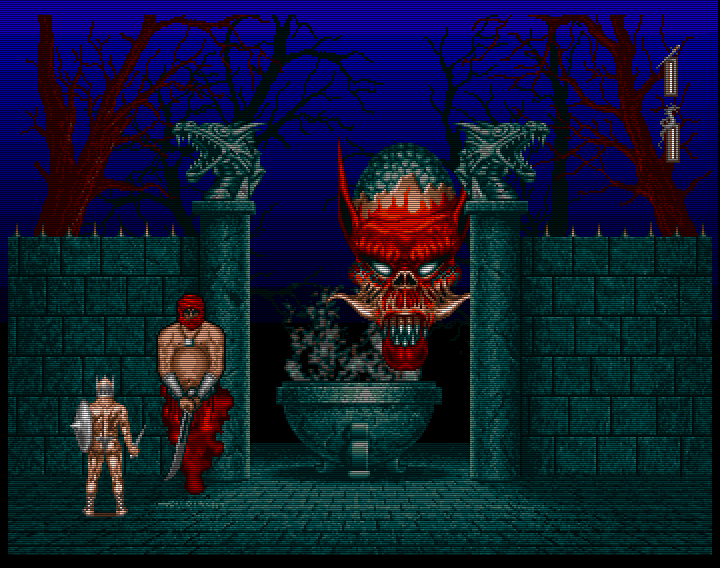
Figure 6: Dragonslayer sequence, that has been shared on English Amiga Board (2005). Screenshot: DamienD
Ice & Fire (1989) was also announced in the Dugger booklet together with DragoSlayer as soon to follow release. The French magazine Generation 4 knows in its issue No.6 that the game is expected on Amiga and Atari ST. It had been announced as an adventure game with many original features such as offering several good endings.
Crown (1989) had been announced by the same French magazine Generation 4 as a strategy game reminiscent of Seven Cities Of Gold. “With almost 58 colors, the game, due for release on ST and Amiga in February 89, promises to be excellent.” The magazine prints one screen with an isometric map view of a city called Dead City showing the LINEL Logo as well as the title Crown. The British magazine The Games Machine 10/1988 points out the graphics as well: “Crown (for the ST) is the first strategy game to provide players with a detailed graphic landscape spread over 16 screens, utilising 56 colours on screen.” Further, the gameplay for the strategy game is described as very flexible and user-friendly: “You can conquer cities, rule lands, and fight off invading armies. Feeling aggressive? You can also invade other territories or even get pushy and establish trade routes. Alternatively, a life of crime can be pursued, looting and raiding caravans as they cross the landscape – though be prepared to pay the penalties.” Versions for PC, Amiga and Atari ST were planned.
Solaria (1989) was intended for release in March 1989. Again, the French magazine Generation 4 knows that it is a game that is based on an Aztec sport. The British magazine The Game Machine is more specific, calls it an arcade game and writes the following in its issue 10/1988 on page 15: “Based on a Mayan legend (another true story?), the game is an ancient Aztec sport where two opponents maneuver floating spheres past each other until all the spheres have landed behind one. Acrobatic leaps are the key to success and so energy has to be husbanded carefully to maintain control of the spheres and the attack. It was supposed to be out for ST and Amiga. Information on Solaria, Crown and Ice & Fire are rather sparse.
Drachen von Laas (not released in 1989) was a text adventure. The game was completed by the two German developers Guido Henkel and Hans-Jürgen Brändle, prior to signing a contract with Markus Grimmer, manager of LINEL. But the Swiss publisher favored the development of other games and delayed the release of Drachen von Laas over a year amidst money problems. After working on other projects, Henkel had enough in mid 1990 and annulated the contract with Grimmer. Although times were over for selling text adventures well and gamers wanted point’n’click adventures with visuals instead. The text adventure was eventually published by Henkel’s and Brändle’s newly founded Attic Entertainment in 1991 for DOS, Amiga and Atari ST. Today, it is a sought-after collector’s item.
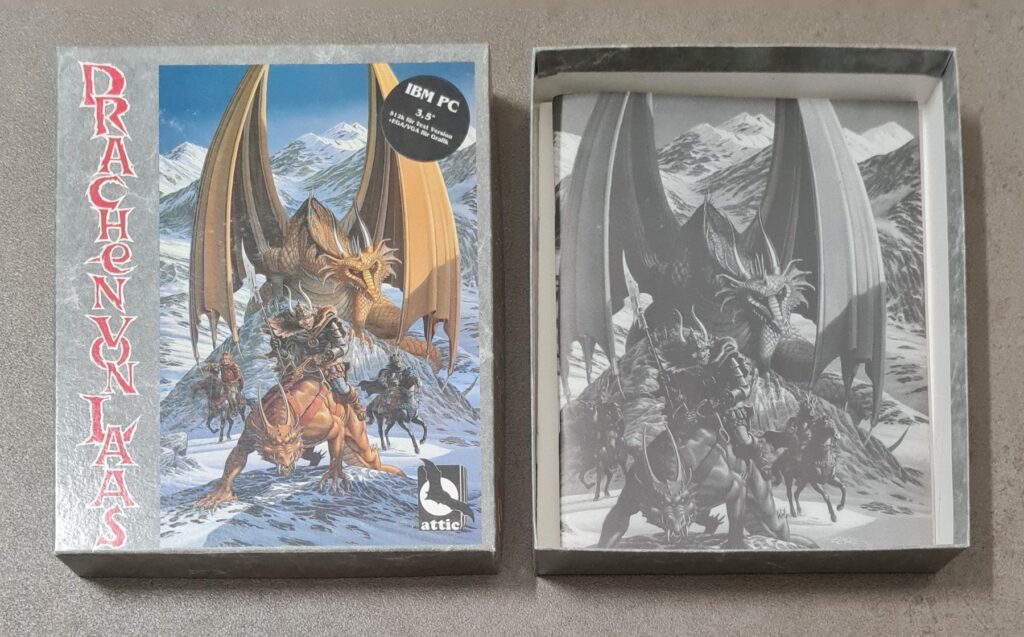
Figure 7: Dragonslayer was finally released by Attic Software in 1991. This is the small box version of the PC edition. Source: Ebay
Dugger 2 (1989) was probably the planned third game in the series of the Herbie Stone games. The booklets for Crack (1988) and Dugger (1988) mention a third game with cartoon character Herbie Stone, but there is no mention of a name for the game. Developer Christian Haller mentions the game in the interview with David Krummenacher and Larissa Wild (2023). He says, there was a prototype of a Dugger 2 game, but it might not have been released. Furthermore, Haller says, that Christian Weber worked on Dugger 2, possibly with the help of graphic artist Ronald Petermann.
Reach out for Gold (1992) was planned as an Amiga release by LINEL for the end of 1992. The project was first mentioned under the name Olympix (ASM 11/92). In its November 1992 issue Amiga Joker wrote a preview and pointed out its quirky comic style and funny gameplay ideas for an Olympic sports game.
“Was die Eidgenossen von Linel hier an einzelnen Wettbewerben zusammengetragen haben, kennt man zwar prinzipiell schon aus der Reihe anderer Sportspiele, allerdings kaum in einer derart humoristischen Verpackung.” (Amiga Joker Nov. 1992:16)
„The individual competitions that the Swiss team at Linel have put together here are familiar from other sports games, but hardly in such a humorous package.“ (translated by author)
The tested prerelease gets a rather good score from the magazine with overall 75%, a silver medal. The price is indicated with DM 89.- Unfortunately, for unknown reasons the Amiga version was never released by LINEL. But at the end of 1993, the British publisher Flair Software released a DOS version. And in 1994, Flair Software released an Amiga CD32 version with the new title Summer Olympix.
Astar – Land in Flames (1992) was announced in a news snippet in Amiga Joker 11/92 as new LINEL product: “Ein Strategie-Epos nach Atlantis Überlieferungen (Amiga mit 1MB)”. An epic story based on Atlantis lore as strategy game. Surprisingly, we find a review of Astar at the same time in Amiga Games 11/92 on page 45. However, there is no mention of LINEL as distributor, but MCS is mentioned as producer. The game is described as strategy game, a mixture between Powermonger and Kaiser. The magazine editor (MK) must have had a demo to play since he elaborately talks about the strategic and fighting gameplay and the many cutscenes that he seemed to like. He states that Astar is interspersed with interactive movie scenes which report on events in and around the land of Astar and force the player to make certain decisions. The strategy game for one or two player shows some affinity to role play games. Graphics and cutscenes seemed to be the highlights. Unfortunately, there is no prototype or demo available until today.
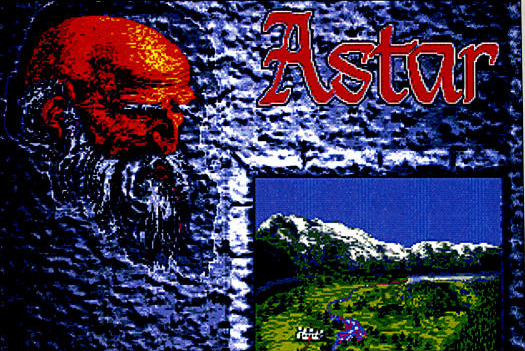
Figure 8: Astar, Land in Flames, unreleased game from 1992. An epic Story based on Atlantis lore. Source: Amiga Games 11/92, p.46
The release of Neverending Story II: the Arcade Game (1991) in early 1991 in German on Commodore 64 was followed by Amiga, Atari ST and PC versions in Italian, Spanish and English. But the LINEL crew also worked on a a second installment, that was called Neverending Story II – the Adventure. This should have been the start of a classic adventure series. The development of this second game was going to be based on the new MACS engine (Modular Adventure Control System) that Arndt Hasch had developed for LINEL as an answer to Lucas Arts SCUM engine. Unfortunately, there was only a demo version, that made it to PC Joker and was previewed in their 6/91 issue. The reviewers were quite impressed by graphics and especially sound, but the game with the interface that looked rather similar to the classis Scum point’n’click adventures was never finished. Later, the MACS-engine was used for the game Der Schatz im Silbersee (1993).
Der Schatz im Silbersee (Amiga version, not released in 1993/94). The PC-Version was released in 1993 with Software 2000 as publisher. LINEL and Cybervision were the two developer teams, Markus Grimmer was the producer. Michael Tschögl did the animations. According to Mobygames, an Amiga version was developed, but never released. There is a demo version available in the internet. The German magazine Amiga Joker received a test-version and wrote a preview in its 3/94 issue and gave it a good rating of 74%. A first progess report was already written by Hans Ippisch in Amiga Joker 8/93. He visited LINEL and knew that the Amiga version will be similar to the PC-version, and it will come in 256 color graphics (for Amiga 1200). Ippisch’s progress report is worth reading since he describes in detail how script, storyboard and visuals were made. And he also gives some insights about contract negotiations at the Nürnberg book fair of 1992 between the head of the Karl-May-Verlag (books) and LINEL. Der Schatz im Silbersee was the first game by the German publisher Software 2000 of a planned Karl May Edition, a series of Karl May adventures that should have been developed with LINEL.
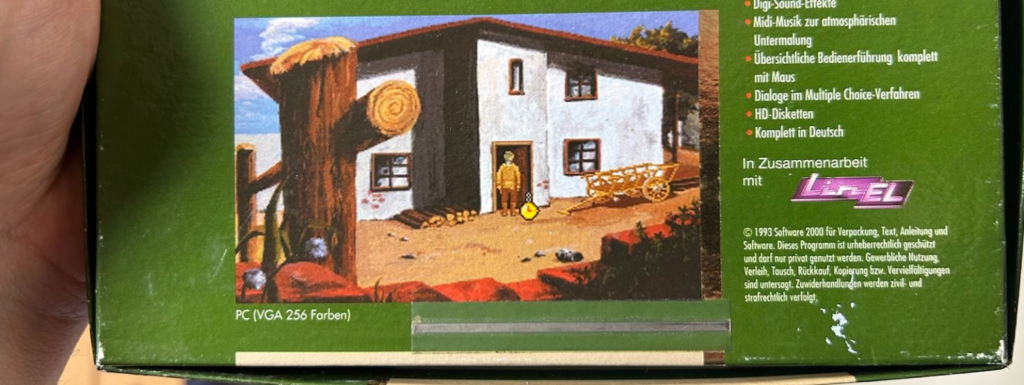
Figure 9: Back of box of the published PC version of Der Schatz am Silbersee (1993) with LINEL’s impressum. Photo: Eugen Pfister
Durch die Wüste (announced but not released in 1994), would have been the second game in a series of three (or four) adventure games about Karl May. The magazine ASM received a sample version for PC, tested it and wrote a preview for its 6/94 issue. It mentions LINEL as developer and announces an Amiga version as well. The sample was from publisher Software 2000. The magazine knows that Durch die Wüste was structured in four episodes, in which the player as Kara Ben Nemsis together with his servant Ben Hadschi has to survive four different adventures. ASM also says that the graphics that it had seen so far leave it hoping for the best. It prints two screenshots from the game and praises the great scenery of which the game contains around 80, says that both characters can be controlled individually as player avatars. And the game contains many full-screen video sequences. Finally, it hopefully announces the release of a PC and an Amiga version for summer 1994. Sound programmer Matthias Steinwachs composed the music for the game. He got his assignment from LINEL-boss Markus Grimmer, who told him, the music for Durch die Wüste should sound oriental, but still oriented to western listening habits. Steinwachs worked on it for several weeks and was quite happy with his part. He was waiting for the video sequences to finish his project. Unfortunately, they didn’t come – and the game was never released, and the series was abandoned.
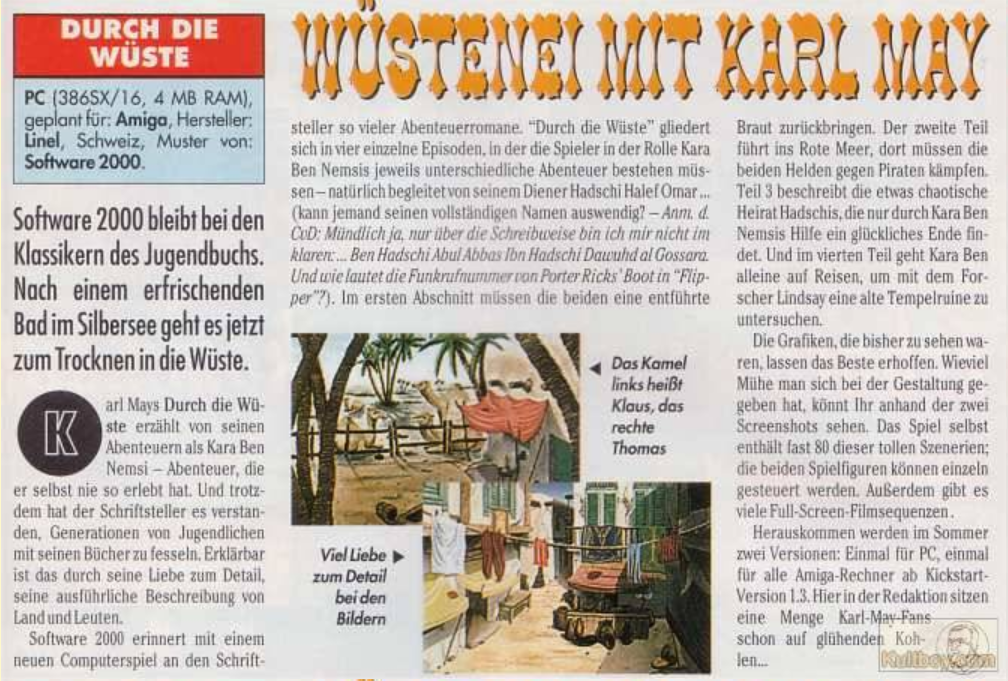
Figure 10: The German Magazine Aktueller Software Markt (ASM) announces the expected second installment of a Karl May game series by LINEL in its 6/94 issue. Screen: Kultboy
In the booklet for the game Necronom (1991), together with Traders (1991) and The Neverending Story II (1991), there was another LINEL product announced that seems somewhat mysterious, since there was no announcement to be found in magazines. Its title is “Lords of the sea (1000 B.C.)”. According to the brief description, it was supposed to be “a very complex strategy game based upon the rivalry of the Greeks and the Phoenicians in the Mediterranean area.” The player “must trade with other towns for over two dozen products, search for mines, build factories, recruit soldiers and build war fleets.” The complex game of trading, strategical management of troops and fighting should even have allowed two players connected via modems to battle it out. The PC version was planned first, then an Atari ST and an Amiga version. Unfortunately, there is no mention of this colossal project anywhere else. The game may be added to the list of 11 unreleased LINEL games, if we find a confirmation.
Unconfirmed project:
Lords of the sea (1000 B.C.) (1991)
There was more cooperation announced in game magazines by Markus Grimmer. In ASM 11/92, the magazine’s editors reported on new information from LINEL and announced a new cooperation by the Swiss publisher with Dynasty International Information Co. Ltd. from Taiwan. Dynasty International may have sold the licenses for three games to LINEL. These were the role-playing game Legend of the Swordmaster, the adventure strategy game Heroes of China and the strategy game Battle Commander, all in DOS Format for PC. As there is not more information to find, it is not clear, how far this deal went and which of Dynasty’s games these were. We may assume, that the Legend of Swordmaster could have been a localization of the role-playing game Tian Wai Jian Sheng Lu (1993), and the Heroes of China strategy game could have been a localization of Heroes of Legend (1994). Both these games appeared in Chinese but were not translated or localized for other markets. The game Battle Commander (1993) is announced in the booklet of the published Game of Life (1992) by LINEL. It is expected shortly to be available for Amiga and PC. The short description (in German) says: “The challenging strategy game from Taiwan. This extensive strategy game (50 levels) was created in collaboration with Dynasty International. The aim is to coordinate troop movements and lead armies through battles as safely as possible.”
Unconfirmed projects:
Legend of Swordmaster (1993)
Heroes of China (1993)
Battle Commander (1993)
Besides the 31 games, that Swiss publisher LINEL with temporary headquarters in St.Gallen, Vaduz and Herisau had published under its own label in the years 1987 – 1995 and at least 13 diskmag editions (part 1), we learned in part 2 of this essay that there were at least eleven, possibly even 16 more games or projects that had been completed but not released. Or they were in progress at some point and could be tested as prototypes but did not make it further than being demo versions for the gaming mags to write previews. These games did not find their way onto the Software market.
The scale of international cooperation by the Swiss publisher LINEL is quite amazing at a time where international cooperation with a small business was not so easy. We must take in relation that communication was a lot more difficult over long distance and across borders in the 1980s and early 1990s than today, where we have the internet and an abundance of means and tools to communicate digitally in real time. There were expensive phone calls and fax machines and the good old postal service, but mostly, businessmen like Markus Grimmer had to rely on personal contacts, set themselves up with like-minded people, travel abroad to special events like game exhibitions and computer fairs to establish good business links, find the right place to duplicate and print the games and the right partners to distribute them. And they had to keep in touch with the developers as well, maybe round them up from time to time, invite them and offer them a temporary working area where they were able to work together and learn from each other. And where it was possible to have some more control over the production process of a game.
The first part of this essay on LINEL tried to compile a complete list of all LINEL’s released games.
The second part focused on LINEL’s international cooperation and its unreleased games and tries to uncover on one side as many connections as possible, and on the other side, as many canceled and failed projects as may possibly be traced.
The third part of this essay will take a closer look at the people that worked with and for LINEL and their working and career situations during those busy years.
The final fourth part will focus on the publishing business with the physical production of the commercial games, distribution and marketing strategies and communication efforts by LINEL.
Sources and Literature will follow at the end of part 4 of this essay.
LINEL – a Swiss Game Publisher /
— Part 1: Compiling a list of LINEL’s games
— Part 2: International Collaborations and Unreleased Games
— Part 3: People and Work at LINEL
— Part 4: Publishing and Marketing at LINEL
